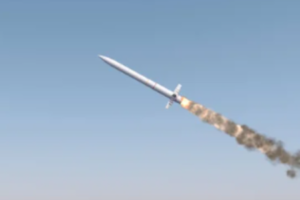Northrop Grumman has announced its involvement in showcasing advancements in autonomy and electronic warfare technologies for unmanned surface vessels through its Project Scion initiative. The company has already conducted successful tests on the East Coast in December, where a T38 ship, provided by Martac and equipped by Northrop, autonomously detected, pursued, and monitored a moving target in the Chesapeake Bay. Following these tests, Northrop Grumman is now focusing on preparing Project Scion’s technologies for presentation at two upcoming events: the Association for Uncrewed Vehicle Systems International’s Xponential 2024 in California this April, and the Naval Surface Warfare Center Crane Division’s Silent Swarm in Michigan come July. The Xponential event will concentrate on the use of collaborative autonomy beyond just national security applications, while Silent Swarm will delve into electromagnetic warfare and digital deception.
Dennis Grignon, a business development manager at Northrop, shared insights in an interview, stating, “We’ve been working since December, the two months since we demoed, on taking those next steps. We did this on a single platform, but we could scale our package down to a very small USV, so we could repeat this.” This initiative arrives as the U.S. Navy and Coast Guard are increasingly interested in uncrewed technologies, with strategies and plans already in motion to incorporate these into their operations to enhance capabilities and operational flexibility.
Project Scion is notable for integrating technologies from various fields, including aerial drones, ground robotics, and smart buoys, to create multifunctional payloads that transform platforms into effective combat and surveillance systems. Grignon highlighted the adaptability of these technologies, stating, “The flexibility with our payload allows it to be programmed for multiple missions. It’s part of a bigger-picture need for doing more with fewer resources, and that’s the gap we’re trying to fill here.”
The push towards autonomous systems is seen as a strategic move to prepare for future challenges, where manpower and resources could be stretched thin, particularly in potential conflicts in regions like the Indo-Pacific. Autonomous vessels could serve multiple roles, from reconnaissance to logistical support, augmenting the capabilities of manned vessels. Matt O’Driscoll, a Northrop chief engineer for maritime systems and integration, elaborated on the December trial’s achievements, saying, “We’re receiving the data, processing and analyzing it, and then taking an action on that data, based on commander’s intent. The effectors that were onboard our vessels were just cameras,” he continued, “But going forward, that could be anything from an electronic attack like jamming, or cyberattack, or it could be kinetic with a human in the loop.”
This development aligns with the Department of Defense’s Directive 3000.09, which governs the deployment of semi-autonomous and autonomous weapon systems to ensure reduced risks associated with autonomy and arms, emphasizing a cautious approach to the integration of these advanced technologies in military operations.
Media Contact
Editor, Defence Buyer
Tel: +44 (0) 1622 823 922
Email: editor@defencebuyer.com





